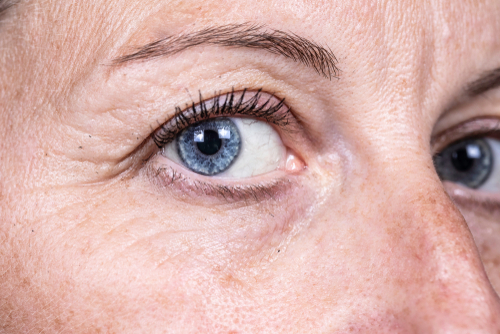When Is Eyelid Surgery Necessary?

As we get older, it’s more likely that you’ll suffer from baggy or sagging eyelids. Besides being unattractive, eyelids can sag low enough that the skin blocks vision.
Tired of your saggy eyelids getting in the way of seeing well? You may be a good candidate for a procedure called blepharoplasty. Keep reading to learn when eyelid surgery is necessary!
What is Blepharoplasty?
A blepharoplasty is a procedure that removes excess skin, muscle, and fat from eyelids that are heavy, droopy, or saggy. This typically occurs as you age, as the muscles around your eyes tend to weaken.
Preparing for blepharoplasty is about as straightforward as the surgery itself. You will first need to go into the surgeon’s office for a pre-surgery screening.
This screening includes a physical examination. The physical exam tests your tear reflexes and measurements of your eyelids.
You’ll also have a vision examination that will test your normal vision. Your eyes will be photographed as well, to assist the surgeon in planning incisions.
You will also discuss your medical history to make sure the surgeon knows of any other eye conditions. It will also alert them to potential risk factors.
Before any procedure, blepharoplasty included, you need to have a discussion about expectations. It’s important to have realistic expectations before you have any surgical procedure.
Before the date, you will need to stop taking certain medications. You’ll get a list of these during your screening.
You’ll need to stop taking certain medications before others, so consult your doctor. You will also need to not smoke for a few weeks before surgery, as smoking reduces your body’s ability to heal.
What Can I Expect During A Blepharoplasty?
As for the surgery itself, the surgeon will start with the upper eyelids after numbing the area. An incision is then made along the crease of the eyelid.
This helps hide any scarring that may occur. Excess fat and skin, as well as some amounts of muscle, are removed carefully. The incision is then closed.
If your eyelids are very droopy, the surgeon may add support to the eyebrow muscle to strengthen it. If you need work on your lower eyelids, the surgeon will make the incision below the lashes, or inside the eyelid.
The fat, skin, and muscle may need to be redistributed in the lower lid, or it may simply be removed as well.
You can schedule an appointment at Kovach Eye Institute to learn more.
Recovery
A blepharoplasty is an outpatient procedure, so you will be able to recover in the comfort of your own home. But you will not be able to drive yourself, so make sure to schedule a ride to and from the office.
Immediately after the surgery, you will rest in a recovery room for a bit before you can go home. You can expect certain symptoms such as blurry vision, watery eyes, swelling and bruising, and general pain and discomfort. To help combat symptoms, follow instructions which may include:
- Using ice packs frequently for several days after surgery.
- Do not strain yourself with exercise or heavy lifting.
- Refrain from putting contacts in for a couple of weeks.
- Do not rub your eyes.
- Clean your eyelids with the materials provided to you.
The worst of the symptoms should be over within 2 weeks, but full recovery may take longer. Scars will typically fade after a few months if they are noticeable.
Wondering if a blepharoplasty may be the right procedure for you? Schedule an appointment at Kovach Eye Institute in Chicago, IL and get on the road to looking younger!

